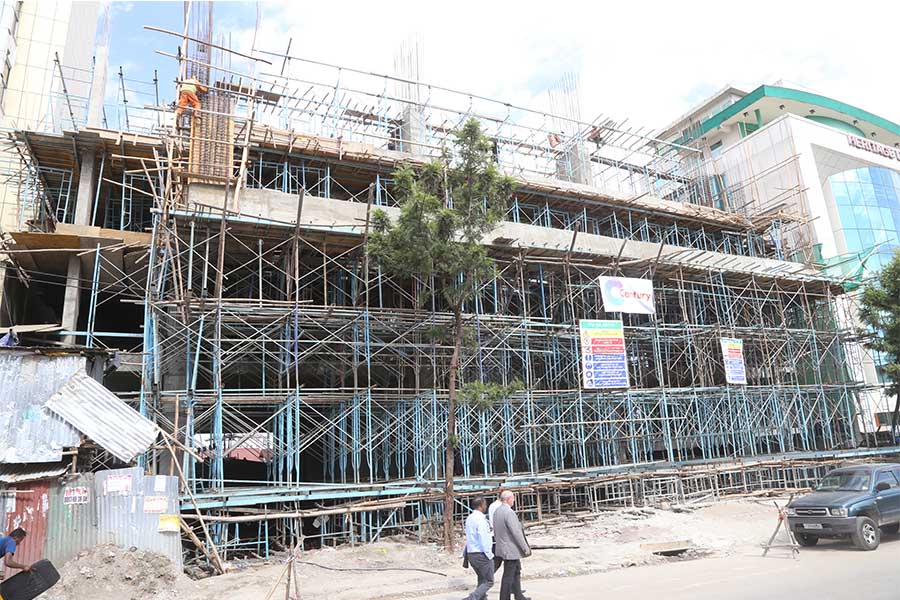
Radar | Dec 07,2019
The construction worker removing grit and paint from windows on a half-completed high-rise dangles from a ledge with a bucket of water and a short-handle brush in one hand and bracing himself with the other.
The ledge, no more than two or three feet wide, runs across the face of the building. The worker steadies himself with his back and free hand against the wall, moving gingerly and balancing himself precariously toward the next window that needs cleaning. He is standing five or six-storeys high without any protective gear, any anchorage or any body harness that could break his fall in case of an accident.
The worker is decked out in a tattered t-shirt, a soiled baseball cap and a canvas pair of shoes that had seen better dayas long before they graced the sinewy feet of their present owner. Occasionally, passersby glance up to look at the suspended creature, who from a distance resembles a scarecrow attached to a wall, and seem to cringe at his every move as they hurry on to go past him and avoid witnessing an inexorable tragedy.
His coworkers - themselves scarecrow figures in rags, “tinder-dry and crackled” as in Katy Darby’s story - flutter about below him oblivious to the skinny figure that is sliding tentatively across the narrow window ledge overhead.
Ethiopians are inured to the anarchic world of construction where anything goes.
A young woman, apparently in charge of the construction project, stands to the side with a cell phone affixed to her ears and entirely absorbed in a heated conversation. She is in a fashionable pantsuit, high heels and has a leather bag slung across her shoulders. The woman casts an incongruous figure, out of place and out of character, amidst flying debris, blowing dust and the grinding noise of a construction site. She too is oblivious to the danger caused by one of her crew members who is perilously teetered on a window-ledge just above her head.
The worker, inches away from certain death, slides one foot across the ledge and drags the other slowly to a position of balance. He then falteringly turns to face a window, scrubs and cleans it furtively, before he turns slowly to place his back against the wall. At that moment he appears to be contemplating eternity, bravely facing an abyss that gapes at him greedily and is ready to swallow him, all but for one wrong slip or a single misstep.
Even as he maneuvers his wiry body on this death-defying walk, some spectators gasp but none venture to intervene; no one picks up their smartphones to take pictures or call out for the authorities to come and rescue the imperiled worker.
The building where the worker hangs teetered to a window ledge is located in the middle of the city in Shola, Yeka district - but the scene could be placed anywhere in Ethiopia.
Ethiopians are inured to the anarchic world of construction where anything goes. Construction sites without guardrails, vertical barriers designed to prevent employees from falling to lower levels; without toe-boards, barriers that prevent materials from falling to lower levels and keep employees from slipping over the edge; without parameter fencing to keep the public out; and where employees work without wearing any proper protective gear are as common a sighting as the thick-billed raven in Ethiopia.
The construction industry in Ethiopia holds 2.6 million jobs, which is 7.1pc of the country’s total employment, according to the Ethiopian Construction Project Management Institute. The Institute reported in 2017 that 900 people lost their lives due to construction accidents.
The Civil Code and Labor Code of Ethiopia date back to the 1940’s and are the general legal basis for health and safety rules governing workers in Ethiopia. These laws spell out the fundamental obligations of employers with regard to workplace safety. The employer is legally obliged to take measures to safeguard the health and safety of all workers, according to a 2016 study in the International Journal of Scientific & Engineering Research by Lucy Fekele, et al.
The study also reports that fatal injury rates for the construction industry are higher than the national average in all industries citing scaffold collapse, falls from heights, trench collapses, electric shock, and failure to use proper personal protective equipment as the main causes of fatal accidents.
The Ethiopian construction sites are veritable and confounded accident traps of uncollected debris; unimproved work terrain strewed with construction material, rock and mud; unprotected trenches; uncompleted backfills and obstructed ingresses and egresses. It is no wonder then that hundreds of workers trip, fall, tumble, stumble and injure themselves at these building sites.
As the nation leaps forward by constructing and planning new road networks, massive high-rises, bridges, railroads, manufacturing centres, factories and other infrastructure projects, the role of construction safety should be placed front and centre. Project owners, construction consultants, contractors, subcontractors and suppliers have a duty to minimise workers’ exposure to construction accidents. Employers must be required to implement safety and health programs for each project.
The time to create a meaningful safety culture that addresses every aspect of construction safety, and indeed industrial safety, is long overdue. A program that ensures accountability at all levels in the sector - government, owners and contractors - is also overdue. Enforcement of existing occupational safety and health regulations by federal and local regulators must be taken seriously and implemented professionally.
To bring Ethiopian industrial safety rules to the 21st century implementing a mandatory workmen’s compensation insurance program as used in the United States is essential. Such a program will bring discipline to employers who otherwise neglect the safety of their workers. The scheme, in which workers who are injured in the workplace, receive medical care, loss of wages and compensation regardless of fault will squarely place the onus of workplace safety on employers and owners.
PUBLISHED ON
Apr 13,2019 [ VOL
20 , NO
989]


Radar | Dec 07,2019

Radar | Oct 12,2019

Sunday with Eden | Aug 17,2019

Sunday with Eden | Nov 23,2024

Radar | Dec 05,2018

My Opinion | Apr 20, 2025

Radar | Jun 19,2021

Agenda | Jul 31,2021

Advertorials | May 21,2024

Verbatim | May 03,2025

Dec 22 , 2024 . By TIZITA SHEWAFERAW
Charged with transforming colossal state-owned enterprises into modern and competitiv...

Aug 18 , 2024 . By AKSAH ITALO
Although predictable Yonas Zerihun's job in the ride-hailing service is not immune to...

Jul 28 , 2024 . By TIZITA SHEWAFERAW
Unhabitual, perhaps too many, Samuel Gebreyohannes, 38, used to occasionally enjoy a couple of beers at breakfast. However, he recently swit...

Jul 13 , 2024 . By AKSAH ITALO
Investors who rely on tractors, trucks, and field vehicles for commuting, transporting commodities, and f...

Jul 12 , 2025
Political leaders and their policy advisors often promise great leaps forward, yet th...

Jul 5 , 2025
Six years ago, Ethiopia was the darling of international liberal commentators. A year...

Jun 28 , 2025
Meseret Damtie, the assertive auditor general, has never been shy about naming names...

Jun 21 , 2025
A well-worn adage says, “Budget is not destiny, but it is direction.” Examining t...